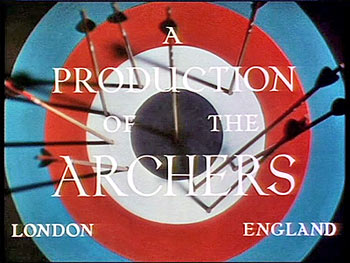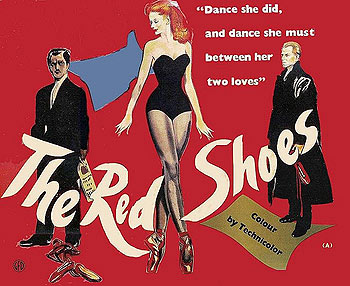A Young Person’s Guide To: Powell & Pressburger*
Published on November 29th, 2009 in: Culture Shock, Issues, Movies, OMG British R Coming, Retrovirus |By Chelsea Spear

Who They Are
In the late 1930s, Michael Powell had left banking to study film in the south of France, working his way from lowly production assistant to director of silent films and early talkies. Meanwhile, Emeric Pressburger—a Hungarian émigré—had written screenplays at the legendary Ufa Studio in Germany and in France before settling in London. The pair met as hired hands on Alexander Korda’s 1939 feature Contraband, and spent the following two decades crafting some of the best-loved features to come out of the UK, including The Red Shoes, Black Narcissus, and The Life and Death of Colonel Blimp.
Why They’re Important
While making their fourth feature, the wartime drama One Of Our Aircraft is Missing, Powell and Pressburger shared a writing-producing-directing credit and hung their shingle as The Archers. When he contacted actress Deborah Kerr about playing the lead role in their first masterpiece, The Life and Death of Colonel Blimp, Pressburger sent her the pair’s five-point manifesto that detailed why they produced films. Many of the points in this manifesto spoke to how seriously the pair took their work and their audience—a respect more contemporary filmmakers would be wise to follow.
While many of their films are known for their technical and narrative innovation, the last features they made in collaboration with one another experimented with what they described as “the orchestrated film.” Their features combined elements of music (in the case of The Tales of Hoffmann and Oh Rosalinda!! they used opera) and ballet (most notably in The Red Shoes) with their sumptuous high standards for cinematography, costumes, and production design to create a symphony for the eyes as well as the ears. A few contemporary filmmakers have continued in this vein. If you hated Moulin Rouge and consider Baz Luhrmann the bane of contemporary cinema. . . well, you have Powell and Pressburger to blame. However, if you enjoy Guy Maddin’s recent forays into the worlds of ballet (Dracula: Pages from a Virgin’s Diary) and musicals (The Saddest Music in the World), you have the Archers to thank.
The technical and narrative excellence, offbeat sense of humor, musical experimentation, and plucky female protagonists of the Archers’ films have influenced more than those two directors. Throughout the 1970s Hollywood renaissance, many American directors lined up to praise Powell and Pressburger’s work—most notably, Francis Ford Coppola and Martin Scorsese.
During the ill-fated Zoetrope Studios period, Coppola invited Powell to come to the States and serve as an advisor on his production work. Scorsese’s hat tips to the Archers are so extensive they would outnumber the word count of this article. In addition to the copious references in his films, he has also worked tirelessly on restoring their work and making it available to the general public. His extensive restoration work and endless championing of Powell’s work led to a lifelong friendship, and eventually to Mickey Powell’s marriage to Thelma Schoonmaker (the award-winning editor who worked with Scorsese for over 35 years) in the waning years of his life.

Where To Start
With a partnership that spans three decades and almost as many films, knowing the best place to start can be a daunting challenge. Their biggest commercial success, The Red Shoes, is perhaps the ideal point of departure for nascent Powell and Pressburger fans. Made at the height of their power, The Red Shoes retells the Hans Christian Andersen tale—both in the film’s major plot (in which a ballerina must choose between her love of the dance and her marriage to a music composer) and in a 20-minute ballet sequence at the center of the film. The film is the first and most accessible feature in which the Archers worked with the orchestrated film aesthetic. Moira Shearer’s portrayal of the doomed ballerina Victoria Page grounds the film with her vulnerable, endearing performance—one in a long line of Powell’s heroines who is forced to choose between love and ambition.
Pages: 1 2
One Response to “A Young Person’s Guide To: Powell & Pressburger*”
December 5th, 2009 at 2:46 pm
[…] A Young Person’s Guide To: Powell & Pressburger, Popshifter November/December 2009 issue […]
Time limit is exhausted. Please reload the CAPTCHA.